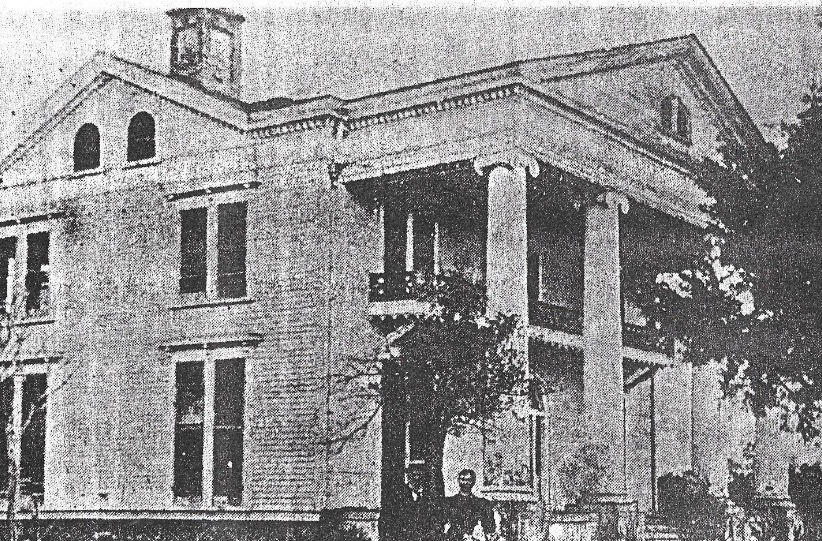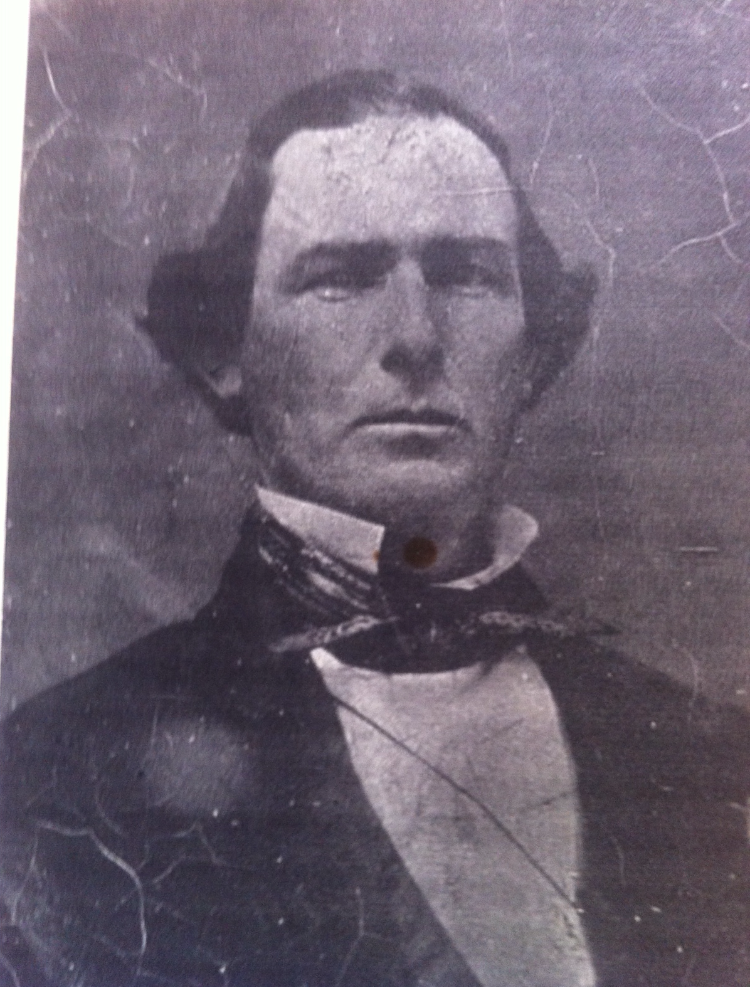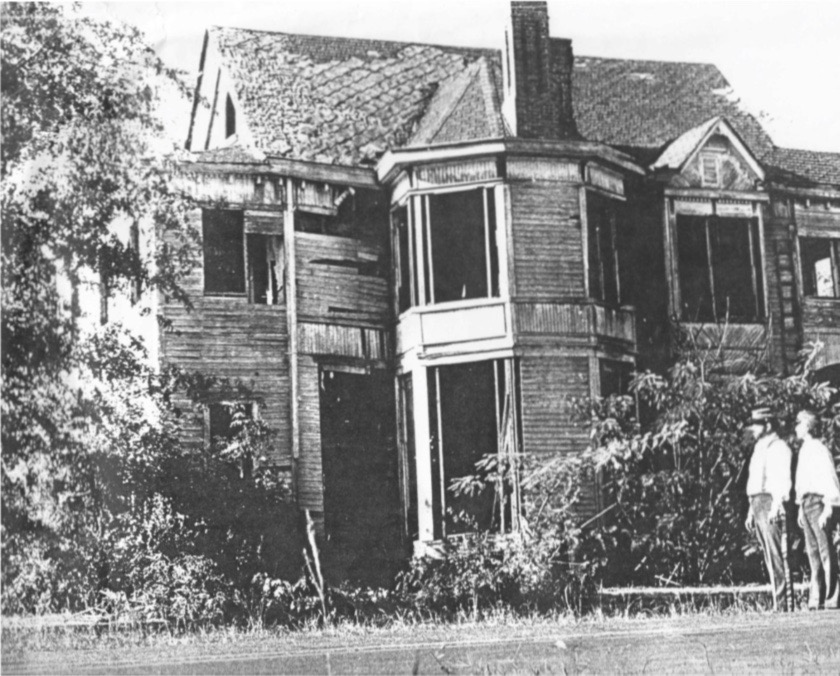
McKenzie Crooks.
“Uncharted Territory: A History of Pleasant Hill, Louisiana.”
In 1803 the President of the United States made the bold and generational decision to contribute to western expansion and purchase the Louisiana territory from the French government. On December 20 of that year the French flag was lowered to officially mark the transfer. This became a chief expansion of American territory in history, nearly doubling the land mass of the maturing nation, and highlighted the country as an emerging worldwide power. The evident emergence of political parties contributed to the political uproar of the transfer and people argued over the president’s rash decision making, exploration and survey of the land, and western expansion itself. Although heated debates arose to inquire on the presidential limits of the constitution, westward development commenced immediately but change came gradually.
In the early 1800’s, this transformation of the region took time. Wesern Louisiana became known by many nicknames, including “No Man’s Land” and the “Devil’s Playground” because it was ruled by outlaws, thieves, and bandits. Criminals flocked to the area to evade repercussions for their actions. Gang life was notorious; hazardous species of snakes and bulky animals occupied the zone, and Indian groups also resided in several locations of Louisiana. Some were considered violent and malicious, like the Attakapa, identified by the belief that they were cannibals, while some were deemed farmers and resided along the Red River, like the Caddos Indians. The innumerable exposures in the area did not tempt migration, so the area remained mysterious and uncivilized for years. Despite the horrors of the unknown, some did make the dauntless and valiant decision to relocate to Louisiana and made it possible for Louisiana to advance into its existing state.
In 1844, the uninhabited hills of lower Louisiana were still free of many settlers. John Jordan, who was looking for a new home, voyaged to the southern area of Desoto Parish. He discovered an exceptionally fertile section of land that reminded him of his hometown of Pleasant Valley, Alabama. Because of this similarity to his original home site, he named the land Pleasant Hill and became the first to settle in the area. Several farming families began migrating toward the area, including the Childers and the Chapmans from Macon, Georgia who traveled by wagon train to the area and aided John Jordan in the origination of the town. These people included: Stephen Decator Chapman, Benjamin Franklin Chapman, Ambrose Chapman, William Washington Chapman, John Childers, and his wife Maria Chapman. They started constructing the area, and the fertile land contributed to the uptick in fortune of the families, because they managed to grow sought-after crops like cotton. They built enormous, detailed homes frequently described as mansions. Ambrose Chapman claimed 2,000 acres upon his arrival and farmed 500 acres of that land. He constructed a large plantation according to the government census, with 52 slaves providing the labor. Several larger home sites were constructed, and farming became chief economic engine of their society. Among these fine sites was the unique home of John and Maria Childers, known as the Childers Mansion, costing an upwards of $10,000, pictured below (Petty and Brown 410).

“It was two-storied, with eight large rooms; there was a spacious hall in front and a very large dining room and kitchen in the back. A balcony graced the front of the frame house, with a wide gallery, supported by four round pillars with fluted ornamental work at the top and bottom” (Petty and Brown 413).
The population grew exponentially, and the Chapmans and Childers had many children who contributed to the history and expansion of Pleasant Hill, including Henry Jay Chapman, the son of Ambrose Chapman, and Sallie Chapman, the daughter of Stephan Decator Chapman. Soon a post office was constructed, which was operated by Stephan Decator Chapman, grade schools and colleges, business centers, and a plethora of other operations, escalating Pleasant Hill into a village of refinement and cultural pluralism. Everything in the village was continuously expanding economically and socially, and the politically fueled events that would soon occur in the location were hardly foreshadowed.

Hotly debated topics like the Missouri Compromise, the Dred Scott Decision, secession, slavery, and the presidential election of 1860 were some contributing dynamics of the terror known as the American Civil War. The Civil War officially began on April 12, 1861, when confederate forces attacked Union troops at Fort Sumter in South Carolina. The North and South were politically and economically pitted against each other and Louisiana became part of the Confederacy. Most of the men who were of age in the area joined the Confederate Army, parting with the women and children to care for the homes unaccompanied. Pleasant Hill was no exception. John Jordan raised troops as the first in command. He named Henry Jay Chapman second in command. The men departed Pleasant Hill to fight in the Civil War, leaving mostly women, children, and few elderly in the village. Sallie Chapman stayed at the Childers home with her aunt Maria, and the women cared for each other and the young children.
The disheartening atmosphere dramatically transformed into one of absolute fear and distress on April 7, 1964, when the Union forces entered Pleasant Hill on their way to Mansfield, Louisiana. The troops ravaged store locations, confiscated anything they found advantageous, and burned the rest. Schools, homes, and churches were used for fuel. Crops and cattle were burned or killed and taken for food. Everyone scrambled to find a safe location as the union troops took everything of value. Pleasant Hill was torn apart, and the terrified women could do nothing but stand by. Women did not change into night clothes during this time and were in constant fear of the Union forces.
Union troops easily gained control of the large homes to provide aid and quarter their troops. Major General Nathaniel Banks, the leader of the Union troops, took control of the Childers Mansion from Maria Childers and Sallie Chapman. He used it as his designated headquarters and commanding post. The troops eventually left to fight in the Battle of Mansfield, only to return shortly after to Pleasant Hill, where they took once again occupied the Childers Mansion. The general public of Pleasant Hill was not anticipating that the Confederate troops would follow behind to essentially continue the Battle of Mansfield, and once again the community was traumatized.
The Battle of Pleasant Hill commenced on April 9, 1864, around three o’clock in the front yard of Major General Nathaniel Bank’s headquarters and command post, the Childers Mansion. The Confederate troops were led by Major General Richard Taylor, who was another notable military figure during the American Civil War. This Battle left more than 1,200 men suffering or deceased on the property. This battle became the largest battle that occurred west of the Mississippi River, and had an ultimately shocking outcome. A Confederate soldier noted,
“My prayer is that I may never witness such another sight. Dead men and horses literally covered the ground for rod after rod, while the groans and cries of the wounded were too awful to listen to. We could hear them all night begging and praying for water” (Petty and Brown 411).
The battle only lasted a few hours and shortly after the women scrambled as volunteer nurses to be caregivers for the troops, one of whom was Sallie Chapman. Both forces left the battlefield and it is continuously disputed on who won the battle because both sides claimed victory. The Childers Mansion was used as a hospital and “soon after the battle wounded began to fill the house, using every hall and room except the dining room, kitchen, and two bedrooms” (Petty and Brown 413).
Eventually, the war ended and then: political and economic disputes were resolved, buildings were rebuilt, stores reopened and were restocked, schools were rebuilt, farmland was recovered, and lives were restarted, and every tangible item was replaced. What is unrecoverable is the lives lost over the length of the war, livelihoods taken away, and people were robbed of a historically alternate peaceful state of mind but just like the rest of Louisiana history, change came sluggishly.
“After an absence of many years Henry Childers, [John and Maria’s son], returned to the battlefield in May 1895, just in time to see the dismantled remains of the old mansion” (Petty and Brown 420).

This second image of the home looks considerably different from the original first image, not only because of the inevitable dilapidation, but it also underwent renovations in the 1920’s. William Gooch was the man who performed these renovations for his wife, one of the Childer’s daughters. This process also further hindered the process to have the home saved and placed on the national historical registry in later years.
In 1989, the Chapman’s Mansion was ultimately demolished months’ shy of its possible placement on the national historic registry. The demolition was overseen by Dr. Andrew Murphy, who was the president of the historical society of Desoto Parish at the time. His family ascertained few relics from the home while this was underway. One of which was a window frame that was built into the home itself. This can be seen in the image below.

The window, which is on display, can be seen in the first image of the mansion. The documentation inside of the frame includes the original deed from the purchase of the land that the home site was built upon. This documentation was secured during the relocation of the Desoto Parish courthouse in 2001. During this move, all documents that were over 100 years old were set to be incinerated. These documents can be seen closer in the below image.

John and Mariah Chapman are now buried at the original Pleasant Hill cemetery which sits just south of the first location of the Pleasant Hill community. Also buried there are William Washington Chapman, Benjamin Franklin Chapman, and Stephan Decatur Chapman. This would have been on the edge of town at the time the graveyard was built. This land is now privately owned by the Poimbeau family and the gravestones are often overgrown with trees falling onto the tombstones. They also own the land where the annual Battle of Pleasant Hill reenactment is done. Ambrose Monroe Chapman and Sallie Freeman Chapman are buried together elsewhere at the Old Robeline Cemetery, which is pictured below, along with an image of their gravestones.


Today’s Pleasant Hill is different from the Pleasant Hill described above. Today’s Pleasant Hill is a proud historical site for visitors from around the world. The town is home to not only the battle site, but The Battle of Pleasant Hill Museum and the annual battle re-enactments. It is important and necessary to recollect these events to keep a firm footing in history and understand how America got to the point it is at today. The annual battle re-enactments and museum unveil the pride buried within the community, its townspeople, and Louisiana.
Sources
Barron, Amos J., and Annie Sandifer Trickett. A History of Pleasant Hill, Louisiana, DeSoto Parish, 1840-1881, Sabine Parish, 1881: Featuring the Battle of Pleasant Hill, April 9, 1864 as Told by a Seventeen Year Old Girl, She Was There. 2003. Print.
Petty, Elijah P., and Norman D. Brown. Journey to Pleasant Hill: The Civil War Letters of Captain Elijah P. Petty, Walker's Texas Division, CSA. San Antonio: U of Texas, Institute of Texan Cultures, 1982. Print.
Text prepared by:
- McKenzie Crooks
- Ryan Laborde
- Bruce R. Magee
Spring 2018 Group:
- McKenzie Crooks
- Drake Daily
Source
Crooks, McKenzie. “Uncharted Territory: A History of Pleasant Hill, Louisiana.” 2017.
